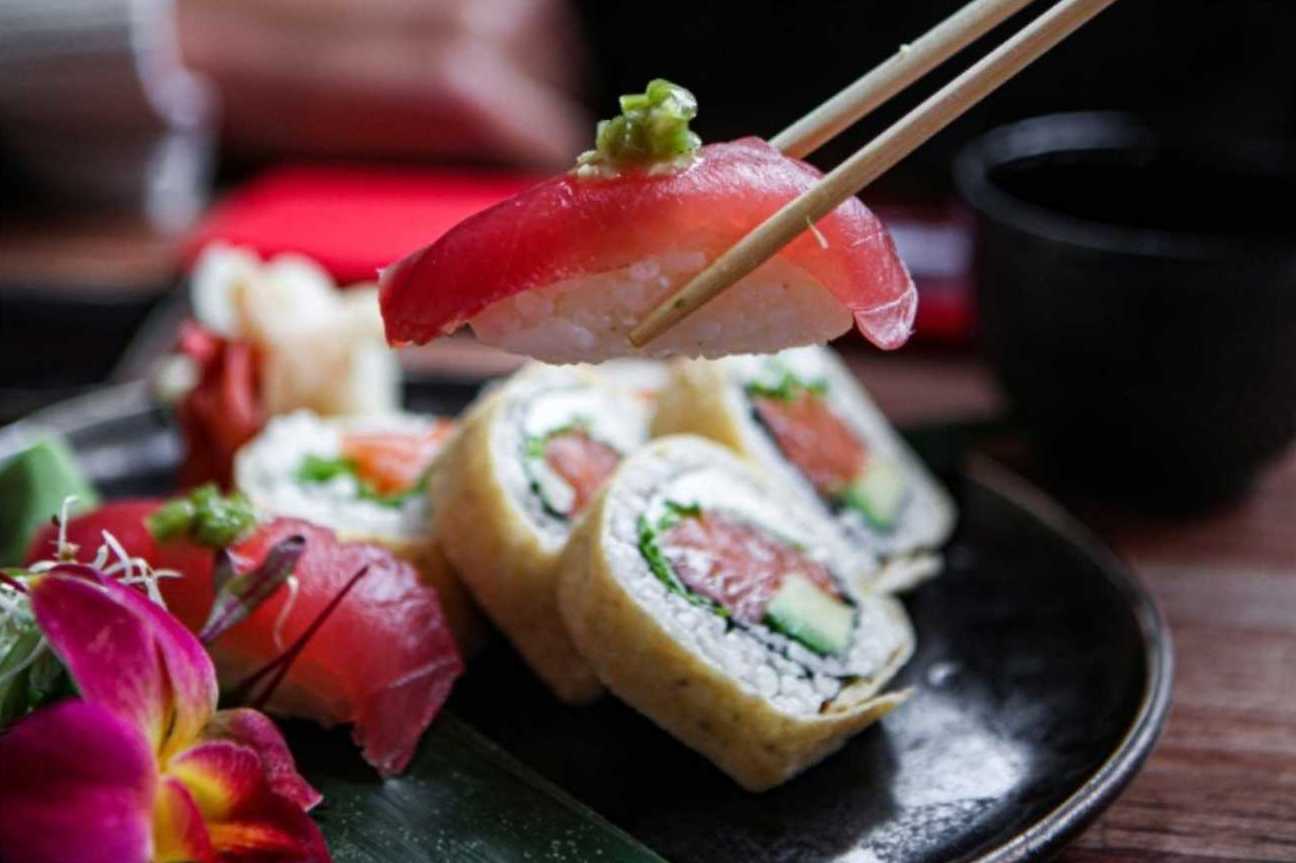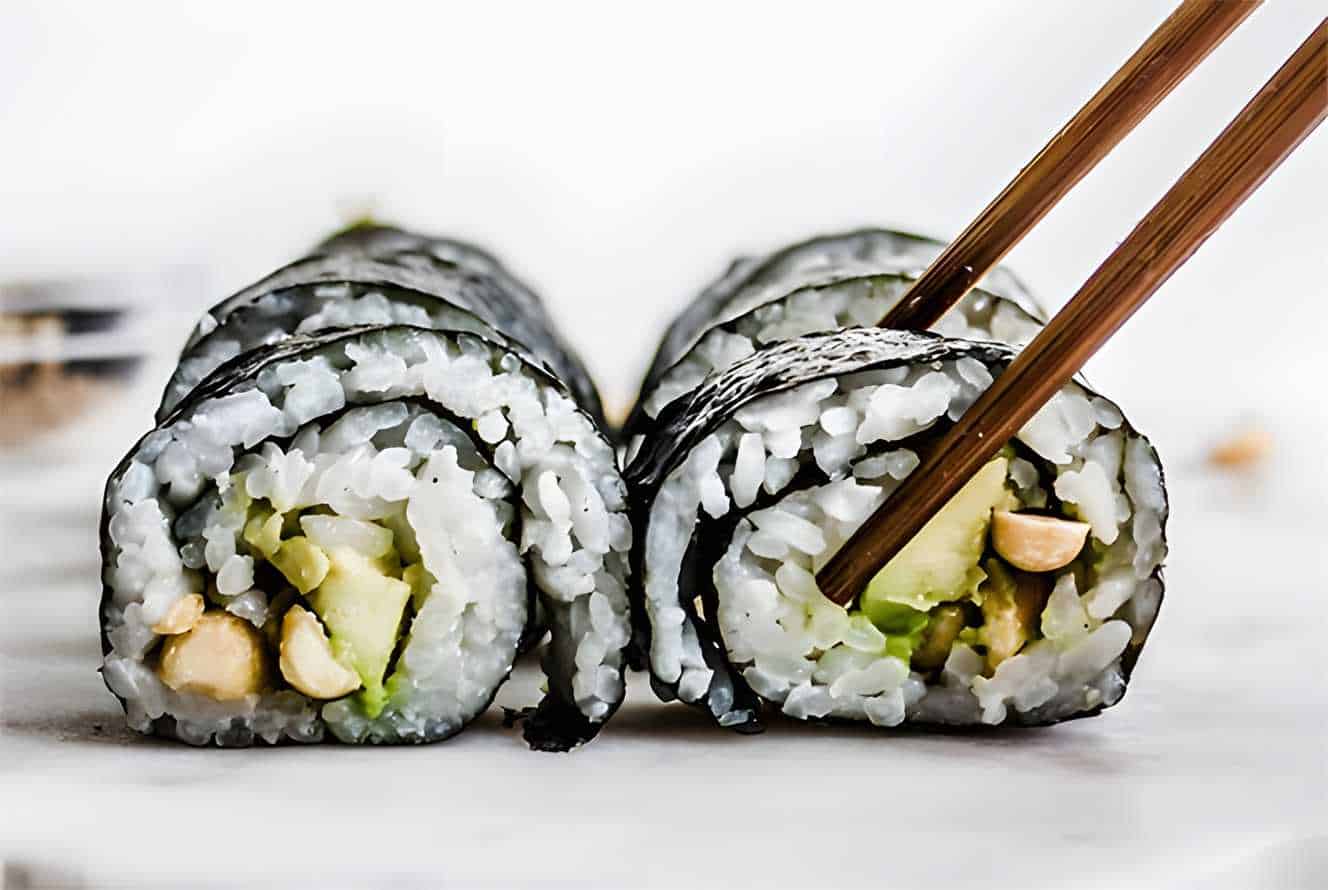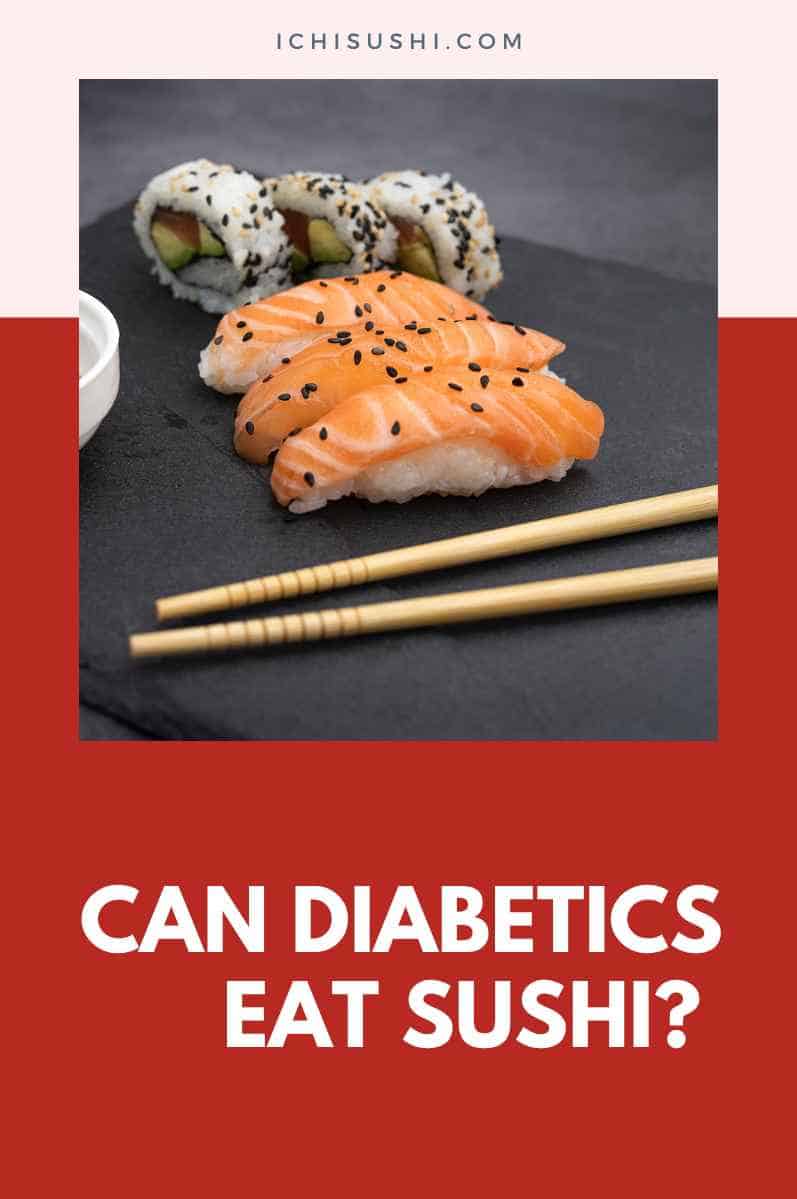People with diabetes strive to avoid consuming too many carbohydrates. “Can diabetics eat sushi?” you might ask. Sushi has nutrients that many people regard to be healthy.
So, many individuals include it in their diets whenever possible. Is it, however, beneficial for a person with diabetes who is struggling to keep healthy?
Is sushi safe for diabetics?
| Tips | Information |
|---|---|
| Plan ahead | Check the menu online and plan your order before arrival |
| Avoid all-you-can-eat | All-you-can-eat options can be tempting, but not diabetes-friendly |
| Share dishes | Sharing dishes can help to avoid overeating and control portions |
| Mindful eating | Eat slowly and enjoy each bite to feel fuller faster |
| Hydration | Drink water before, during, and after to prevent dehydration |
| Be aware of hidden sugar | Watch out for added sugar in sauces, dressings, and marinades |
Sushi is a Japanese word that refers to rice rather than raw fish. The rice is the troublesome part of the food that diabetics must pay special attention to.
Sushi rice is made from a specific type of short-grain rice known for being sticky and higher in starch. It’s sticky and starchy. It’s seasoned with rice vinegar after it’s cooked.
Rice vinegar, used in sushi rice, has a slightly sweet taste but contains minimal carbohydrates. The typical extras of wasabi, pickled ginger, and soy sauce contain very few carbs. However, white sugar, a carbohydrate, may be present in the rice.
Sushi contains a lot of white rice. It’s a simple carbohydrate that can cause your blood sugar levels to soar. In some people, this results in a massive surge in blood sugar that takes a hefty dose of insulin to bring down.
For others, sushi can reach hours to take action fully. This condition can result in a whole night of insulin micromanagement to get blood sugar back into range. Greasy toppings and sweet sauces can make the situation more complicated.
Makizushi is undoubtedly the most well-known variety of sushi. You can make Maki by rolling rice and fish in a nori seaweed sheet. The carb content of nori is usually shallow.
You can serve sushi in various ways, such as handrolls and sashimi, which do not contain rice.
Maki rolls are perhaps the trickiest of the most popular sushi types. Maki rolls tend to have rice within the seaweed. Others have rice outside, being larger and containing more carbs per piece.
Eateries also go crazy with maki roll toppings. The carb counts rise as the toppings grow crazier. Some rolls may contain sweet sauce, fruit, or deep-fried breading ingredients. Individual rolls can have 80-100 grams of carbs when these three ingredients are combined.
In general, sushi is safe if you’ve got diabetes. You only have to exercise creativity and resourcefulness so you can still satisfy your sushi cravings without sacrificing your health.
Does sushi spike blood sugar levels?
The sushi type you consume may affect your blood sugar levels. Sushi can be basic, like a tuna maki roll. It can also be coated in mayo and fried toppings. The more protein and fat in your food, the longer it will take for your blood sugar to rise.
Because of the processed carbs and little fiber, adding low fiber and sugar will cause its carbs to break down fast in your digestive tract. Your insulin and blood sugar levels may rise, contributing to overeating.
Carbohydrate content in sushi is difficult to determine because of the numerous varieties of ingredients you can use. As a result, one sushi roll may have more carbs than the other.
However, sushi indeed raises blood sugar levels. A surge in blood sugar can result from any food made with white rice.
Prepare for periods of blood sugar uncertainty. Sushi is known for its extended, complex sticky highs and rollercoasters. Monitor your blood sugar, and be ready to take proper action.
The carbohydrate content of basic sushi is as follows:
| Ingredient | Carbohydrate Count in Grams |
| Sushi rice | 35 (¼ cup) |
| Rice vinegar | 0 |
| Nori | 5-10 |
| Pickled ginger | 4g/ounce |
| Fish | 0 |
Depending on how many rolls have been consumed and their size, a single serving can contain 500 calories. Sushi made with short-grain rice has more carbs than sushi with long-grain rice. That’s one healthier option you can consider.
How to Eat Sushi If You’re Diabetic
If you have diabetes, you must keep a close eye on your calorie consumption. Rice is the primary carbohydrate source in sushi. This rice has been refined to the point where it has lost practically all its vitamins, minerals, and fiber.
A type 2 diabetic’s blood sugar will soar if he consumes a lot of processed carbohydrates. Refined carbohydrates can also cause inflammation and increased heart disease and diabetes risk.
Sushi rice has a high glycemic index, breaking down quickly in your stomach. You can use brown rice or quinoa in place of white rice.
When quinoa is used instead of white rice in a California roll, the carbs are reduced to 38 grams while fiber goes up by 3 grams. If you insist on white rice, only use a tiny amount.
Quinoa is an excellent option for rice in terms of texture. It is somewhat sticky so that it stays together easily in sushi preparation. It also absorbs vinegar flavor quickly.
It will turn off-white or slightly yellow when cooked. You won’t notice much of a difference after the sushi is made.
On the other hand, brown rice can help synthesize lipids more efficiently than white rice. It also contains a good level of fiber.
Another alternative is riced cauliflower. You may still get the same flavor by marinating it in vinegar. You can also make it using low-carb ingredients that help it hold together by creating a slightly sticky feel.
On the plus side, the vinegar used to cook the white rice can help balance blood pressure and blood sugar and decrease body fat. To boost nutritional content and lessen the effect on your blood sugar, put less rice and more veggies in your sushi roll.
To avoid consuming too much fat, stay away from crisp components and tempura rolls. Avoid adding sugar and salt by using soy sauce and dipping sauces.
If a single serving is not enough to fill your stomach, you can eat other foods. A meal rich in fiber, protein, and healthy fats, such as guacamole, would be a good choice.
If you’re not a fan of raw fish, make avocado or cucumber rolls. Avocado rolls are abundant in fiber and healthy fats.
Restaurants will less likely regard your condition. So it’s best to make your homemade sushi. In this manner, you can keep track of your portions. You can also avoid using unhealthy substances.
Sushi consists primarily of dried seaweed sheets, rice, pickled ginger, and other ingredients you may want to add. You may find these ingredients in most stores in your area.
The key ingredients that determine sushi taste are nori and rice vinegar. So start with these and add more components as desired. Fish, an omelet, veggies, or lime juice are all popular additions.
If you prefer not to form your ingredients into a sushi roll, you can combine all the components in a bowl. The flavor will be nearly the same.
Instead of pickled ginger, use grated fresh ginger. Add a splash of vinegar to the mix. Reduce sodium intake by using low-salt soy sauce.
Unlike regular rolls, twist your rolls as cone-shaped to receive less rice. It’s also best to garnish your sushi with healthful toppings like edamame, wakame salad, or miso soup.
Take advantage of opportunities to improve your health while avoiding negative consequences. Make sure your carb consumption for the day isn’t exceeded by sushi.
Health Benefits of Sushi for Diabetics
Sushi is safe to eat in moderation and not too frequently. It also provides a lot of health benefits. You’ll get lots of vitamins and minerals that you need.
- Rich in Nutrients: Sushi contains various ingredients that are advantageous to individuals with diabetes. They are high in vitamins and other essential nutrients. Although it is primarily made up of raw fish, sushi is high in phosphorus and trace elements. Both are helpful to individuals with diabetes.
- Improves Blood Circulation: When you consume sushi regularly, your arteries and veins get strengthened. Your blood flow also improves, and cholesterol drops. Japanese food, including sushi, can also prevent atherosclerosis as well as thrombophlebitis. These foods are helpful for diabetics.
- Promotes Gut Health: Sushi improves the digestive system and helps to prolong life by preventing senile dementia. This food is why everyone in Japan appears to be young. Rice is also essential to boost digestive system function and combat constipation. A healthy digestive tract is critical for diabetes patients to maintain blood sugar management.
- Keeps Tummy Satisfied: Patients with diabetes frequently experience hunger. Sushi rolls are a quick and easy way to satiate hunger. As a result, they are found in almost all diets and appropriate nutrition. Sushi is made with seaweed sheets, high in iodine, and beneficial to the thyroid gland. It is also low in calories. Furthermore, it provides a long-lasting feeling of being full despite its modest size.
- Maintains Sodium Balance: Sushi is frequently served with soy sauce, which regulates sodium balance. It also supports water-salt metabolism. Pickled ginger also contains anti-inflammatory and disinfectant effects. It reduces your chances of getting an infection.
- Eliminates Toxin: Sushi, when mixed with other components, possesses an antioxidant quality. Heavy metal salts are removed from the body, radionuclides are stopped from acting, and the liver is cleansed of poisonous compounds. Your blood sugar levels are also maintained.
- Strengthens Immunity: If you consume sushi properly, it will boost your immune system. In addition, this delectable food also restores bone tissue structure, increases muscle mass development, and aids blood sugar regulation.
- Improves Blood Quality: Sushi improves your blood quality by increasing the formation of the necessary bodies. Your body’s metabolic processes accelerate as a result of this. Cells also obtain more oxygen, and adipose tissue breaks down. Your natural weight reduction begins.
Summary
Can diabetics eat sushi? Knowing you have diabetes necessitates lifestyle changes, including your diet. This dilemma brings the subject of sushi.
While there are many different ingredients you can use, rice is always present. Do you need to abandon sushi completely? No! You can modify the sushi recipe to savor sushi rolls now and then.

Hiroshi Nakamura, a Tokyo-born sushi chef turned US-based writer and critic, is the voice behind ichisushi.com, blending traditional sushi wisdom with modern insights.





